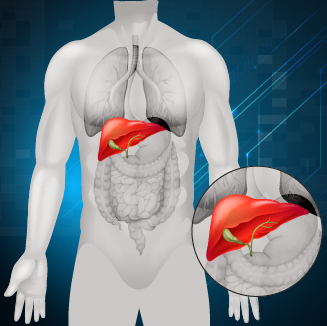Gallbladder removal is considered among the most frequently executed surgical procedures. Getting a gallbladder removal surgery certainly is the right course of action for the removal of gallstones because this medical procedure is performed with minimally invasive techniques. That results in minimal blood loss and pain. Laparoscopic Cholecystectomy is the popularised name coined for this procedure.

Location - Your gallbladder is a pear-shaped organ located in the right upper quadrant of your abdomen or you can also say that it is situated right side of the abdomen below the liver. This is the area that is considered to be the right side of your abdomen that ranges from the bottom of your sternum (breastbone) to your navel. The gallbladder is an organ that has a vital role in our digestive system.
Function Of Gallbladder - Its function is to store bile juice which is mainly essential for the digestion of fat. When we consume our food, the gallbladder in our body responds through a contraction, or in other words, it squeezes, to send bile juice into your digestive tract. The gallbladder in the human body is considered to be a part of the body's biliary system, this system is contains your liver, gallbladder, and associated ducts. This system contributes in production, secretion, and storage of bile.
Cholesterol gallstones - It is the most commonly occurred gallstone. This type of gallstone is also known as cholesterol gallstone, it often appears yellow in color. These gallstones are made up of the cholesterol which the bile failed to dissolve but it also may contain other components.
Pigment gallstones - These gallstones are dark brown or black in colour, its form when your bile contains too much bilirubin.
There are many advantages of performing laparoscopic gallbladder removal and they are mentioned below-
There are many advantages of laparoscopic surgery but it's not for everyone. This surgery is inappropriate for some patients who are suffering from rather a complex gallbladder disorder.
There are some complications involved in such cases. The risk of any potential complications are considerably less
However, some of the potential risks may be involved like Bleeding, Infection, Common bile duct injury, Minor shoulder pain (typically arise because of carbon dioxide gas) and also bile leakage. Although you can consult your physician about the situation. They will perform various diagnostic tests on you to confirm that laparoscopic gallbladder removal is the right choice for you or not.
There are many preoperative procedures and evaluations that the suffering patient has to be prepared for both mentally and physically. Certain requirements have to be met by the patient before the surgery and that are as follows -